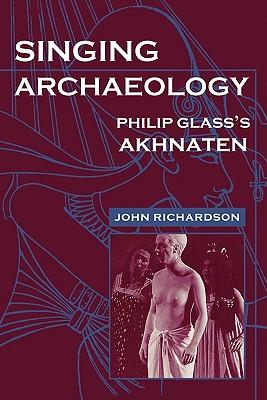Illuminates the aesthetics of a major American composer.
While Philip Glass's operas, film scores, symphonies, and popular works have made him America's best-known classical composer, almost no analysis of his compositional techniques grounded in current cultural theory has yet been published. John Richardson's in-depth examination shows how the third opera of Glass's famous trilogy, the story of an adrogynous monarch who authored radical social and religious reforms, encapsulates Glass's ideational orientation at the time, both in terms of his unique conception of music theater and with regard to broader social questions. Glass's nontraditional musical syntax, his experimental, minimalist approach, and his highly ambiguous tonality have resisted interpretation, but Richardson overcomes those difficulties by developing new theoretical models through which to analyze both the work and its genesis.
In Akhnaten, Richardson says, the composer's concepts of sound and dramatic context, cultural theory, and gender construction intersect, providing perhaps the best demonstration of "the very nature of Glass's aesthetic, which places a strong emphasis on implicit levels of signification and steers clear of conventional 'story telling' narrative strategies." Careful explanations of theory and compositional strategies, close readings of the work itself, consideration of the collaborative aspects of the opera's evolution, and incorporation of previously unpublished interviews with Glass himself combine to illuminate both a landmark work of contemporary musical theater and a dominant figure on the American musical landscape.

Illuminates the aesthetics of a major American composer.
While Philip Glass's operas, film scores, symphonies, and popular works have made him America's best-known classical composer, almost no analysis of his compositional techniques grounded in current cultural theory has yet been published. John Richardson's in-depth examination shows how the third opera of Glass's famous trilogy, the story of an adrogynous monarch who authored radical social and religious reforms, encapsulates Glass's ideational orientation at the time, both in terms of his unique conception of music theater and with regard to broader social questions. Glass's nontraditional musical syntax, his experimental, minimalist approach, and his highly ambiguous tonality have resisted interpretation, but Richardson overcomes those difficulties by developing new theoretical models through which to analyze both the work and its genesis.
In Akhnaten, Richardson says, the composer's concepts of sound and dramatic context, cultural theory, and gender construction intersect, providing perhaps the best demonstration of "the very nature of Glass's aesthetic, which places a strong emphasis on implicit levels of signification and steers clear of conventional 'story telling' narrative strategies." Careful explanations of theory and compositional strategies, close readings of the work itself, consideration of the collaborative aspects of the opera's evolution, and incorporation of previously unpublished interviews with Glass himself combine to illuminate both a landmark work of contemporary musical theater and a dominant figure on the American musical landscape.